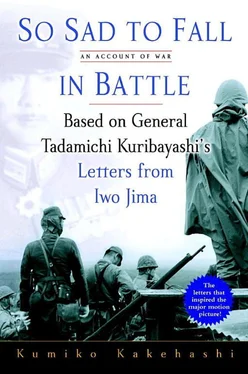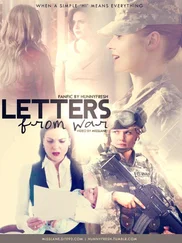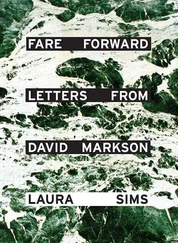2. Build fortifications that enable you to shoot and attack in any direction without pausing even if your comrades should fall.
3. Be resolute and make rapid preparations to store food and water in your position so that your supplies will last even through intense barrages.
Fighting defensively
1. Destroy the American devils with heavy fire. Improve your aim and try to hit your target the first time.
2. As we practiced, refrain from reckless charges, but take advantage of the moment when you’ve smashed the enemy. Watch out for bullets from others of the enemy.
3. When one man dies a hole opens up in the defense. Exploit man-made structures and natural features for your own protection. Take care with camouflage and cover.
4. Destroy enemy tanks with explosives, and several enemy soldiers along with the tank. This is your best chance for meritorious deeds.
5. Do not be alarmed should tanks come toward you with a thunderous rumble. Shoot at them with antitank fire and use tanks.
6. Do not be afraid if the enemy penetrates inside your position. Resist stubbornly and shoot them dead.
7. Control is difficult to exercise if you are sparsely dispersed over a wide area. Always tell the officers in charge when you move forward.
8. Even if your commanding officer falls, continue defending your position, by yourself if necessary. Your most important duty is to perform brave deeds.
9. Do not think about eating and drinking, but focus on exterminating the enemy. Be brave, O warriors, even if rest and sleep are impossible.
10. The strength of each one of you is the cause of our victory. Soldiers of Courage Division, do not crack at the harshness of the battle and try to hasten your death.
11. We will finally prevail if you make the effort to kill just one man more. Die after killing ten men and yours is a glorious death on the battlefield.
12. Keep on fighting even if you are wounded in the battle. Do not get taken prisoner. At the end, stab the enemy as he stabs you.
It is this sort of thoroughgoing attention to detail that distinguishes Kuribayashi as a commander.
The document contains neither vapid ideals nor meaningless, flowery rhetoric. Kuribayashi thought carefully about what was likely to unnerve his men and what mistakes they were likely to make, then told them in simple terms what they needed to be aware of in the heat of battle.
As soon as the real battle began, Kuribayashi started reviewing the achievements of the men under him. He then awarded letters of commendation (testimonials from the commander in chief) and requests for promotion based on these.
On February 19, the day the Americans landed, Second Lieutenant Nakamura Sadao, a platoon commander of the Eighth Independent Anti-Tank Battalion, immobilized twenty tanks. Kuribayashi quickly awarded him a personal letter of commendation and petitioned for a double promotion of rank. Sadao’s achievement even attained jôbun , meaning that his feat was reported to the emperor, a quite exceptional honor at the time.
Kuribayashi continued to review the exploits of his soldiers carefully, awarding them letters of commendation or arranging for their deeds to be reported to the emperor. The offical history records that Kuribayashi issued four letters of commendation, all of which were relayed to the emperor in jôbun . This sort of painstaking scrupulosity was not displayed by the other commanding officers in the Pacific War theater. Presumably Kuribayashi was making some sort of effort to reward his men for their achievements. The responsible officer from the adjutant division directly under Kuribayashi would make his perilous way through the thick of the fighting to deliver the testimonials to the different units.
These letters of commendation were also sent to the Imperial Headquarters and preserved in the official records. On Iwo Jima few survived and most records of the battle were lost, so the testimonials, which record who did what and where, provide insights into how the battle unfolded.
Since the testimonials were preserved in the official record, they were also communicated to the soldiers’ families. This was not only a matter of pride for the whole family, but knowing how their husbands, fathers, and sons had acquitted themselves in combat must have been some consolation for the bereaved families.
Of course, the soldiers who were awarded letters of commendation were not alone in fighting bravely. When communications were cut and reports could no longer be transmitted or when entire units were wiped out, inevitably nothing made it to the record. No doubt many exploits deserving letters of commendation went unrewarded.
In a sense, the battle on Iwo Jima was about more than acts of heroism. There were wounded soldiers who weakened and died for lack of medical care; soldiers who suffocated when their bunkers were blasted shut; soldiers who burned to death when gasoline was poured into the bunkers and ignited. And there were others who never returned when they ran through the hail of bullets to deliver messages or fetch water for their comrades.
Death in battle is always cruel. But if death in battle is death with honor, then every sort of death—including the deaths of those who died trembling and afraid, or bitterly wishing they could be back at home—should be classified as “death with honor.”
The Japanese soldiers believed that, as long as they stayed alive and continued with their resistance, Iwo Jima would not fall. So they lived in agony and they died in agony. On Iwo Jima, every facet of living and of dying was part of the battle.
Kuribayashi was concerned about the families of his men. Major Komoto Kumeji, a senior adjutant, was away in Tokyo liaising with the Imperial General Headquarters when the Americans invaded the island, and thus found himself unable to return. He received a message from Kuribayashi at the end of February while the battle was still raging. It said: “Adjutant Komoto, I want you to deal with the posthumous affairs of the soldiers on Iwo Jima with the utmost thoroughness.” Kuribayashi knew he would not be able to send his men back home alive, but as this brief order shows, he was determined that at the very least Senior Adjutant Komoto should help their families.
In response to Kuribayashi’s wish, Komoto established the Iwo Jima Survey Group together with a number of soldiers below officer class from units on Iwo Jima who were in Tokyo performing such duties as escorting home the bones of the dead. The Group devoted itself to preparing and dispatching bulletins listing the men who had died in action and recording acts of heroism. Their activities continued to the end of 1945, beyond the end of the war.
BY THE BEGINNING of March two thirds of the island was in American hands. They had broken through both the first defense line and the second defense line and had captured all the airfields, including the northernmost of the three, Kita Airfield. The Japanese forces were being boxed into the island’s northernmost tip.
By D-day plus thirteen (March 4), the surviving manpower of the Japanese amounted to some forty-one hundred men. Two thirds of the Japanese officers had been killed, and the bulk of their artillery and tanks were lost.
This was the day when an American plane landed on Chidori Airfield for the first time. A B-29 based in Saipan, it had taken part in a bombing run on Tokyo but was forced to make an emergency landing on the home leg due to mechanical failure and lack of fuel. Although Japanese mortar fire forced it to take off again quickly, the landing was a sign that the capture of Iwo Jima was starting to deliver concrete results for the American side.
In contrast, the Japanese, running out of ammunition, started switching to guerrilla tactics.
Читать дальше












